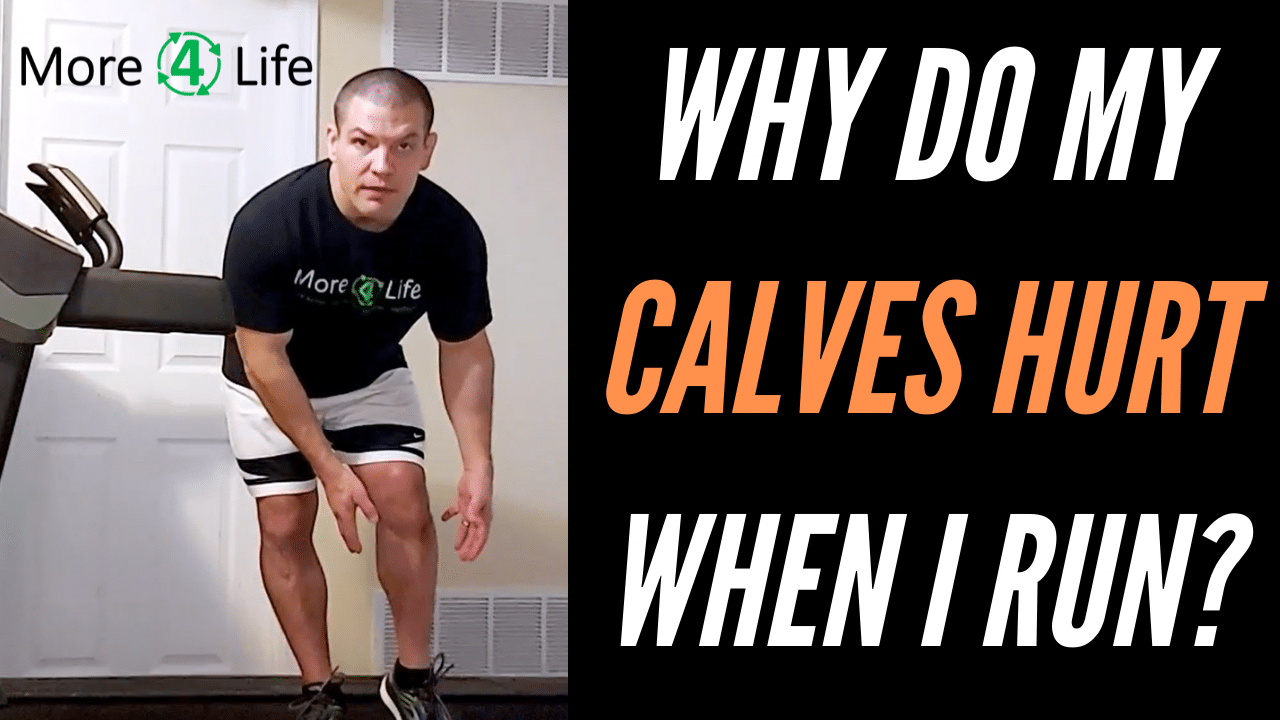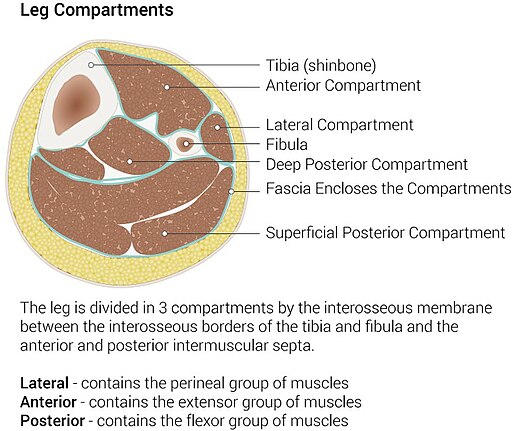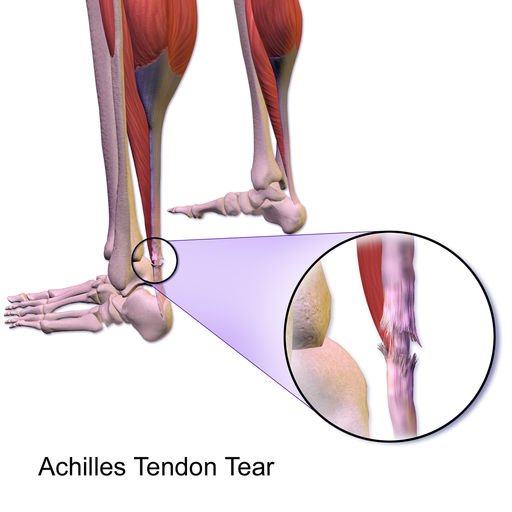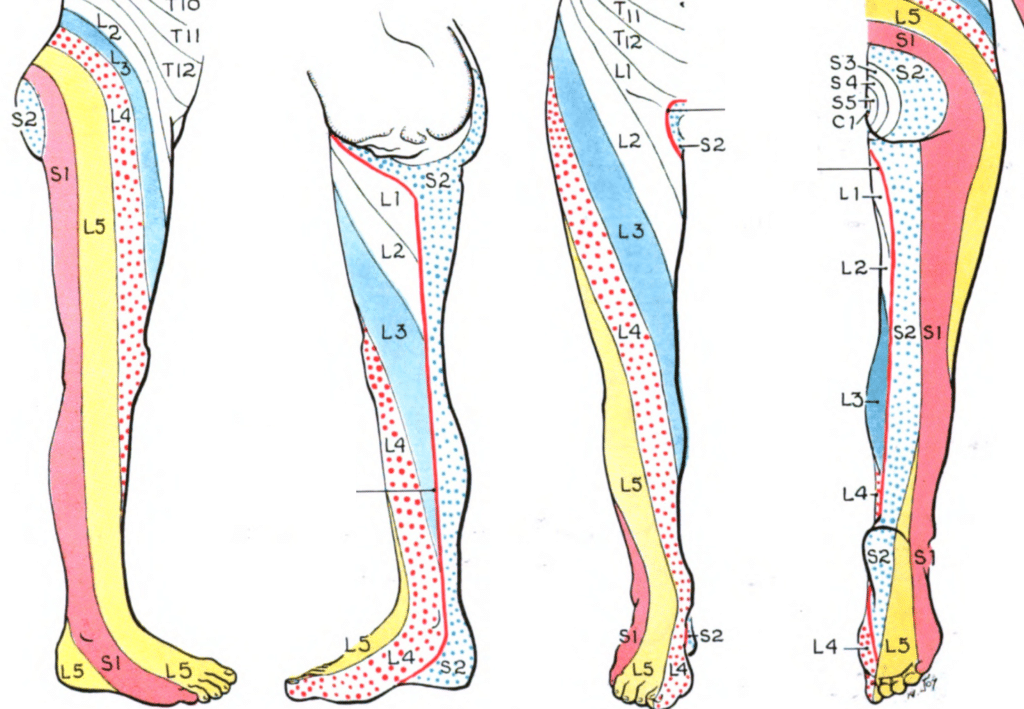Have you ever wondered:
"Why Do My Calves Hurt When I Run?"
If your calves get sore from running, you're not alone.
Many runners' calves hurt when they run, but that doesn't mean that YOU have to suffer.
Learn why your calves hurt when you run, and how to stop calf pain when running.
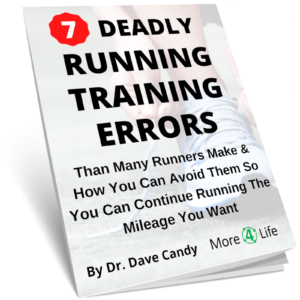
Why Do My Calves Hurt When I Run?
There are 4 common causes of calf pain when running, as well as a few more serious reasons your calf may hurt when you run.
Reasons your calves hurt when you run include:
- Biomechanical factors
- Training factors
- Nutrition factors
- Equipment factors
- More serious causes
Biomechanical Reasons Your Calves Hurt When You Run
Stiff Calves Can Cause Pain When Running
Running with stiff calves can cause all kinds of problems including:
...and yes even calf pain!
When your calves are too stiff, you may land more on your toes when running. This makes your calves have to work hard to absorb the weight of your body as your foot hits the ground. This increased muscle effort can make your calves hurt after you run.
Additionally, as you get further into your stride, your foot pronates (or flattens) too much and too long. Overpronation can cause any of the problems mentioned above, or it can cause the inside of your calves and shins to hurt. This inner calf and shin pain is called medial tibial stress syndrome, but it's more commonly known as shin splints.
Stretching Your Calves Can Help
If your calves hurt when you run, often stretching your calves after you run can be helpful.
Stretching your calves after you run works better than stretching before you run because your muscles are already warmed up, and therefore more flexible. However, a gentle stretch before you run may also help you avoid overpronating when running.
Although stretching your calves can help keep them from hurting when you run, many people stretch their calves incorrectly. Learn how to stretch your calves correctly.
Training Problems Contributing To Sore Calves When Running
Training problems can also cause your calves to hurt when you run.
Largely, most of these problems are some form of overtraining:
- Increasing mileage too fast
- Doing more speed or hill training than you're accustomed to.
- Changing from a rearfoot strike to a midfoot or forefoot strike too quickly.
Anytime you make a change or a progression in your running program, it's wise to introduce the "new thing" slowly and gradually.
If you're increasing mileage, don't increase by more than 10% per run.
If you're doing speed work, start with just a few sprints or strides, and then increase the number that you do each week.
By keeping progressions slow, you can prevent calf pain or other types of injuries that will derail your training program.
Nutrition Factors That Can Make Your Calves Hurt
Hydration
The most important nutrition factor to keep in mind with respect to calf pain is hydration.
Make sure you're getting enough water before, after, and even during your run if it's a longer run.
Your muscles function by electrochemical signals, carried by water. If you don't drink enough water, you may get calf muscle spasms or cramps when you run.
How much water is enough?
This varies for each person based on your bodyweight and activity level, as well as the environmental conditions. However, a good way to tell if you're drinking enough water is to look at the color of your urine.
If your pee is clear or light yellow, you're probably drinking enough. If it's dark or neon yellow, you're probably dehydrated.
Remember, thirst is NOT a good indicator of hydration. By the time you're thirsty, you're already dehydrated.
Electrolytes Matter Too
Electrolytes are basically ions that are a carried in water and contain a positive or negative charge.
The most common electrolytes that affect muscle function include sodium (Na+) and potassium (K+). However, calcium (Ca2+) and magnesium (Mg2+) are also important.
Equipment Problems Causing Calves To Hurt When Running
Changing from a shoe with a higher heel to toe drop to a show with a lower heel to toe drop cause you to run more on your toes, especially if you transition too quickly.
The heel to toe drop is the difference in height of the heel of the shoe compared to the height of the toe of the shoe measured in millimeters.
If you buy a new pair of running shoes and there's a 4mm or greater difference in the drop between shoes, you may want to consider reducing your mileage the first few runs in the lower drop shoe so that you can adapt your running stride without causing your calf to hurt or causing other injuries.
More Serious Causes Of Calf Pain When Running
Blood Clots In The Calves
Blood clots in the calves, or deep vein thrombosis (DVT), is one serious cause of calf pain.
This usually happens to people who are sedentary or have had recent surgery. As such it would be a rare cause of calf pain in runners.
However, it's worth mentioning because a clot in the calves can potentially dislodge and go to the lungs causing pulmonary embolism, which is potentially fatal.
Fortunately, deep vein thrombosis can reliably be ruled out using this calculator based on the Wells Criteria for DVT. If your score is 0 or lower, you have a very low risk of DVT.
Chronic Exertional Compartment Syndrome
Chronic exertional compartment syndrome is a condition that causes an aching, burning, or cramping pain in the calf or lower leg when exercising. In more severe cases, it may also cause numbness, tingling, decreased pulse, or weakness in the lower leg or foot.
Chronic exertional compartment syndrome is most common in runners or other people who participate in repetitive high-impact sports. The repetitive impact causes enlargement of the muscles when exercising. The calf muscles, and other muscles in the lower leg are divided into compartments by fascia as shown in the picture below
If the fascia in the lower leg is too stiff or if the muscle expand too much during exercise, that can create pressure within one of the compartments of the lower leg. This in turn can compress the compress the nerve in the corresponding compartment, thus causing symptoms.
Some of the common places people experience chronic exertional compartment syndrome include:
- The deep posterior compartment - causes shin splint like symptoms in the shin or deep inside of the calf
- The anterior compartment - causes symptoms on the outside of the shin
- The lateral compartment - causes pain in the outside of the lower leg
It should be noted that the superficial posterior compartment, the one that actually contains the calf muscles, is the least affected compartment in the lower leg. However, deep posterior or lateral compartment syndrome can sometimes be perceived as pain on the inside or outside of the calf.
Keep reading to learn more about pain on the outside of the calf when running.
Why Do My Lower Calves Hurt When Running?
Achilles Tendonitis / Tendinopathy
Achilles tendonitis means "inflammation of the Achilles tendon". The Achilles tendon attaches the calf muscles to the lower leg.
Just as the mythical character Achilles had an area of weakness in the heel where he was supposedly dipped in the River Styx by his mother, the Achilles tendon can be a source of heel pain where it attaches to the calcaneus (heel bone).
However, the upper portion of the Achilles tendon can also make your lower calves hurt when running.
Ironically most cases of "Achilles tendonitis" are not "-itises" at all!
Most cases of Achilles tendon pain are actually non-inflammatory.
Achilles tendinopathy, non-inflammatory Achilles tendon pain, is a result of gradual degeneration over time due to poor running mechanics. Left untreated long enough, they can eventually lead to partial or full Achilles tendon tears.
Achilles Tendon Tears
Achilles tendon tears can be partial or full.
A partial tear may just present as a pain, stiffness, and spasm in the lower calf when you run.
However, a full Achilles rupture is often a sharp, sudden pain that may sound like a gunshot going off. The classic version is described as the calf muscle rolling up like a window shade.
Full Achilles tendon ruptures are most common in people age 50 and above. A full Achilles rupture results in an inability to point the toes, and it requires surgery to reattach the tendon.
So if if the lower part of your calf is hurting or you have pain in your Achilles tendon, you want to get it checked out before the problem becomes more serious.
Need Some Help For Calf Pain When Running?
Click the button below to request a Back To Running Evaluation
Your Back Can Make Your Calves Hurt When You Run
Another cause of calf pain actually doesn't come from your calves at all. If you have current back pain a history of back pain, you want to make sure that your calf pain pain isn't being referred from the lower back.
The S1 and S2 nerve roots can refer pain, numbness, or tingling into the back of the calf or outside of the calf.
Click here for more information on how to prevent back pain when running. Other causes of pain on the outside of the calf are described below.
Why Do The Side Of My Calves Hurt When I Run?

There are many possible reasons that the side of your calves hurt when running. However, here are 3 of the most common causes of outer-calf pain, followed by simple solutions to help keep your calves from hurting when running.
Reasons Your Calves May Hurt When You Run
- Pain in tibialis anterior muscle
- Pain in peroneal (fibularis) muscles
- Tibiofibular joint pain
Side Of Calf Pain From The Tibialis Anterior Muscle
When you’re running, you get a lot of ground reaction force that your muscles need to be able to absorb from your heel hitting the ground.
The tibialis anterior is a muscle that runs on the front, outside of your shin and calves.
This muscle helps your body to absorb this pressure from hitting the ground when running.
It's used a lot more whenever you’re going down hill to deal with increased force on your feet. It's also used when running uphill, as this muscle is also used to keep your feet pointed upwards.
However, excessive use of the tibialis anterior when running can cause the outside of your lower leg to hurt when running.
Side of Calf Pain From The Peroneal (Fibularis) Muscles
The peroneal muscles, sometimes called the fibularis muscles, control the amount of pronation in your foot from side-to-side when running.
Similarly to the tibialis anterior, these muscles are also responsible for absorbing the shock of your foot hitting the ground when running.
Although technically the fibularis muscles turn your foot outward, which technically causes your foot to pronate, the fibularis longus muscle runs underneath the foot and helps support your arch when you run.
Again though, when the ground-reaction force from running becomes more than the fibularis muscles are able to handle, they can become a source of pain on the outside of leg and calf when you run.
Tibiofibular Joint Pain
Another cause of outside calf pain when you run may be from the joint tibiofibular joints, where the small bone of your lower leg (the fibula) connects with the large bone of the lower leg (the tibia).
The fibula connects to the tibia on the outside of your knee as well as at the "bump" on the side of your ankle.
These joints can cause pain on the outside of your leg and calf when you run, especially if you’ve sprained your ankle in the past, or have current ankle sprains.
This is because the force of your body hitting the ground when you run drives your ankle bone (the talus) in between the tibia and fibula put a lot of pressure on the joints between the tibia and fibula.
How To Stop Your Calves From Hurting When You Run
Just some simple changes to the way that you run can help keep your calves from hurting when you run. Try the 3 simple tips listed below the next time you run.
Tips Keep The Side Of Your Calves From Hurting When You Run
- Use the small muscles in your foot
- Take shorter, quicker steps
- Move back on the treadmill
Use The Small Muscles In Your Foot When Running
So, how can we fix all three of these problems? Well, the best thing that you can do to solve all of these issues, is by hitting the ground when you run more evenly across your foot.
You can do this by focusing on making sure your mid, and front foot hit the ground just as much as your heel impacts the ground when running. This is one of the easiest solutions for stopping the side of your calves from hurting when running, as you're simply dispersing the pressure throughout your foot.
Take Shorter, Quicker Steps
Another simple solution to solve all of these problems is to take shorter, quicker steps when running. This solution is very effective, because when you take quicker steps, you have less vertical displacement, and therefore less impact on your heels when you run.
By taking more steps over the same period of time, you can reduce the pressure on your lower legs, and you’ll still be able to run at the same speed.
Move Back On The Treadmill
When you’re on a treadmill, you’re not moving forward as much as you are moving vertically, mainly because there is less room for you to take longer strides. This often leads to people having pain on the outside of their calves, or even pain in the back when running on a treadmill.
One of the best solutions for avoiding this calf pain when running on a treadmill, is to move backwards on the treadmill a little to have more horizontal running distance. Then, you can just focus on taking short, quick steps in the horizontal direction, where you don’t move up and down as much.
Exercises To Help Prevent Your Calves From Hurting When You Run
Calf Stretches
The obvious exercise is stretching your calves. However, as mentioned above, many people overpronate when stretching their calves, thus making the stretch less effective.
Click here to learn how to stretch your calves correctly.
Rolling Your Calves With A Massage Stick
Rolling your calves with a massage stick can be helpful if your calves are sore after you run. There are many different brands on the market, but the one used in the first video on this page is called The Stick.
Roll The Stick up and down the back, inside and outside of your calves for a self-massage. This helps release trigger points in the muscles and fascia and can help make the muscles, as well as the fascia that lies around the muscles more flexible.
Using a massage stick is a form of self-massage. However, for deeper trigger points in your calf muscles, manual trigger point therapy or dry needling are very effective at relieving calf pain in runners.
Ultimately though, any stretch, massage, or other treatment for calf pain is only temporary if you don't find the root cause of the pain. That's what we do in our Back To Running Evaluation
Need Help To Run Without Calf Pain?

